About an hour outside of the center of Puebla, nestled in the hills of San Diego La Meza Tochilmitzingo, a small but lush town with fruit and flower trees in bloom even in winter, is the Zinacantan fabrica de mezcal (what they call palenques in this region). We met up with owner and maestra mezcalera Fabiola Torres Monfil at the beautifully painted mural in front of the small palapa mezcaleria. Faby, as she is affectionately known, has been dedicated to mezcal full time for the past seven years, though comes from four generations of mezcal producers. Her parents also produced pulque, but stopped when they reached their silver years. She is one of 11 siblings, five of whom work with mezcal, including a brother who works with her at Zinacantan.
From the mezcaleria, we walk down the curvy hills to a dirt road leading to the new fabrica, inaugurated in 2020. Mezcal is made seasonally between December/January and May, and there are currently only two lots of mezcal that were made from this fabrica; the pre-2020 batches were made at a different fabrica where her other brothers make their mezcal. As we continue past some donkeys in the road, Faby tells us that San Diego is a mezcal town with at least 250 years of recorded heritage. She tells us about a prohibition imposed by the powers that be, which only eased up around 20 years ago, and that her grandparents made mezcal only for themselves because it was very risky to try and sell any.
Faby is a hard worker with lots of energy. She continues the family legacy because she likes it and has a tremendous respect for the land and her family’s heritage of working the land in the ways that have always been: thoughtful, organic, and sustainable. She admits that machismo in the industry is pervasive, and a frustration that she deals with regularly, but it doesn’t dissuade her from following her passion.
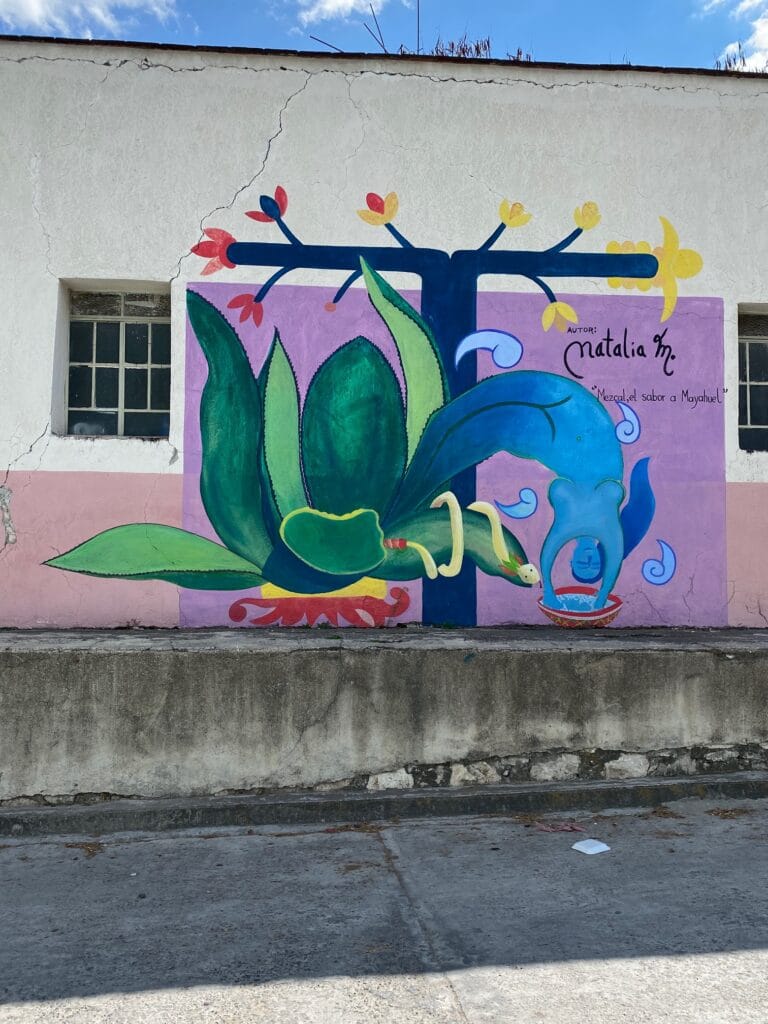
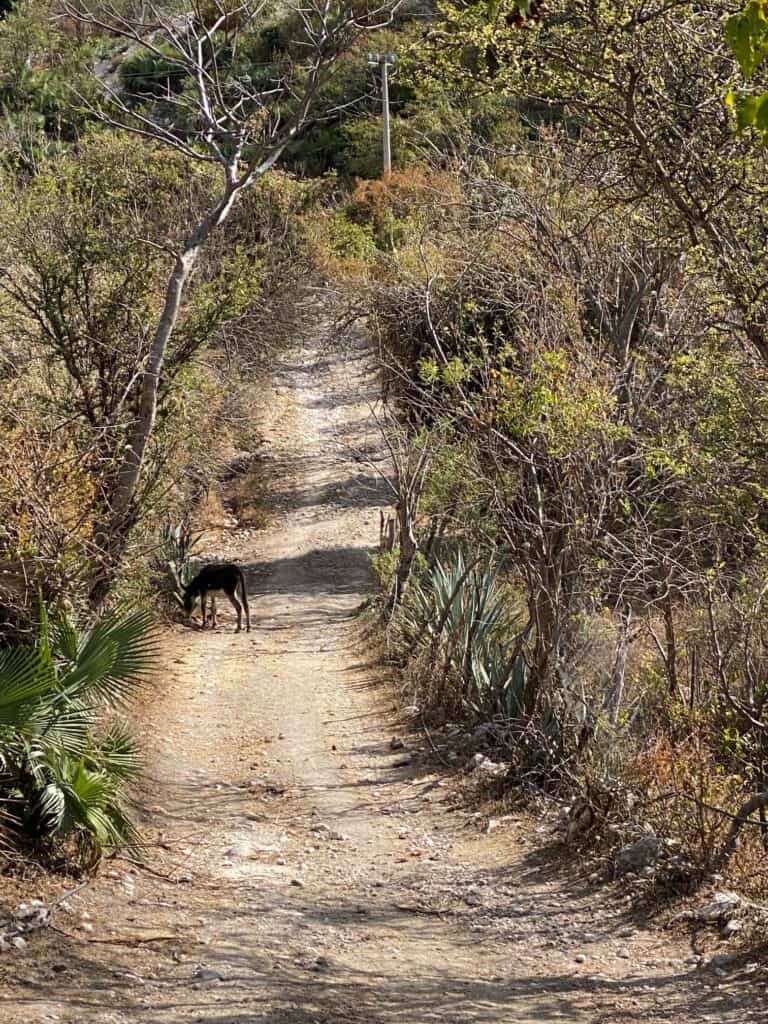
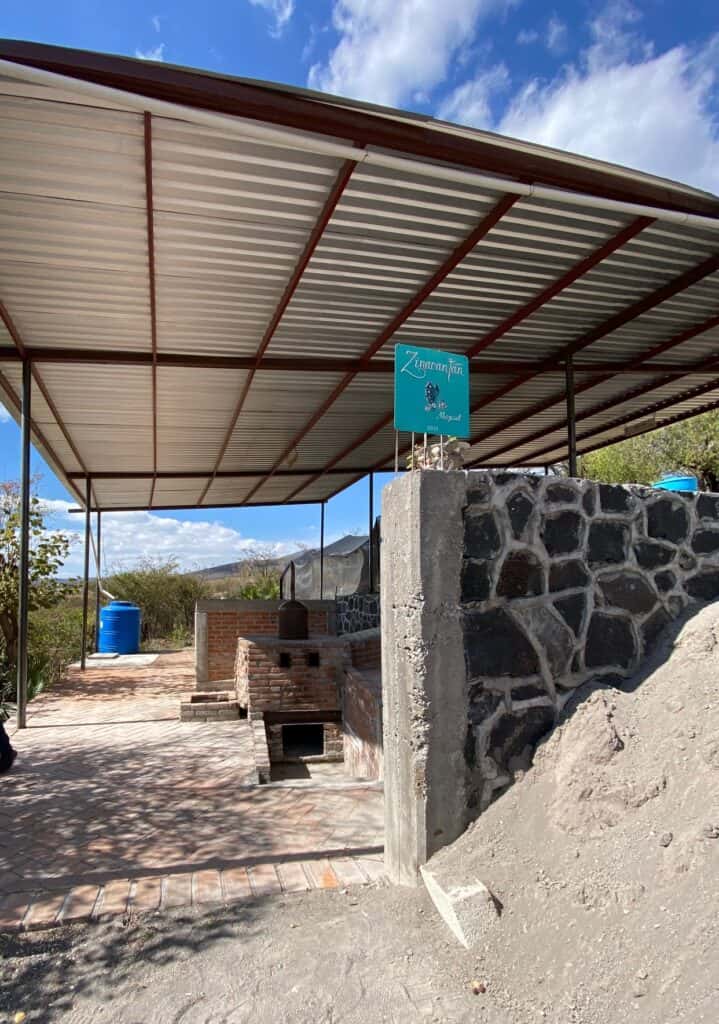
The fabrica
On the side of the fabrica is the nursery, housing baby espadin and papalometl (tobala) plants at various stages of development. Impressively, all of the plants in their nursery are started from seed. Currently all of Zinancantan’s production is made from wild agaves, with a plan to implement semi-wild cultivation. When they are ready to plant, the agaves will be planted in a curved pattern on the slope of a hill, designed to help catch water and prevent erosion–an ingenious idea.
Faby points out a few of the plants that have withered and darkened, and says that plagas, or diseases/pests, are currently strong, and that without chemicals it is very difficult to eradicate them completely. Although organic practices are more difficult, she is committed to growing without the use of chemicals, noting that agaves treated with chemicals don’t produce the same quality of mezcal. She points out a simple yet effective trap for the type of beetles that consume agave hearts–it’s a bottle containing female beetle pheromones that lures the males and traps them, sparing the nearby agaves.
She leads us through the fabrica, which has all the hallmarks of an artisanal mezcal producing facility–an in-ground oven, wooden fermentation tanks, and copper pot stills. One unique production element is the fermentation, which starts out with 15-18 days of dry fermentation, followed by the addition of spring water and further fermentation for 8-10 days. As she walks us through the distillation process, she notes that they use heads and only the first part of the tails to make adjustments, and that lower alcohol tails are never blended into the final product.
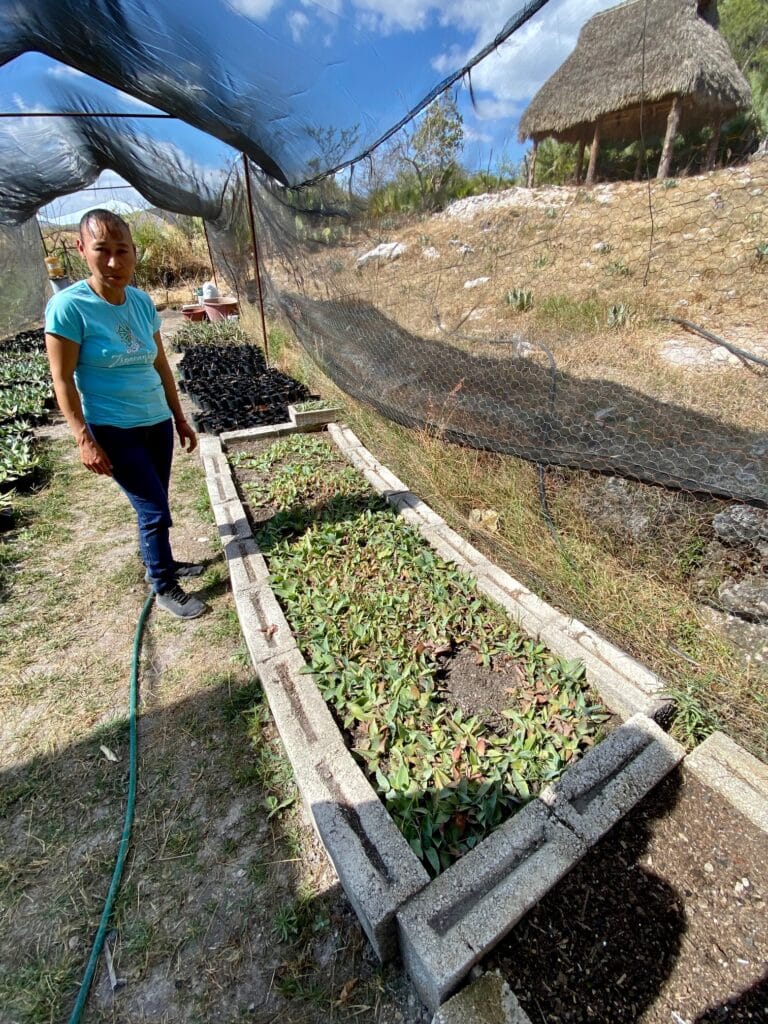
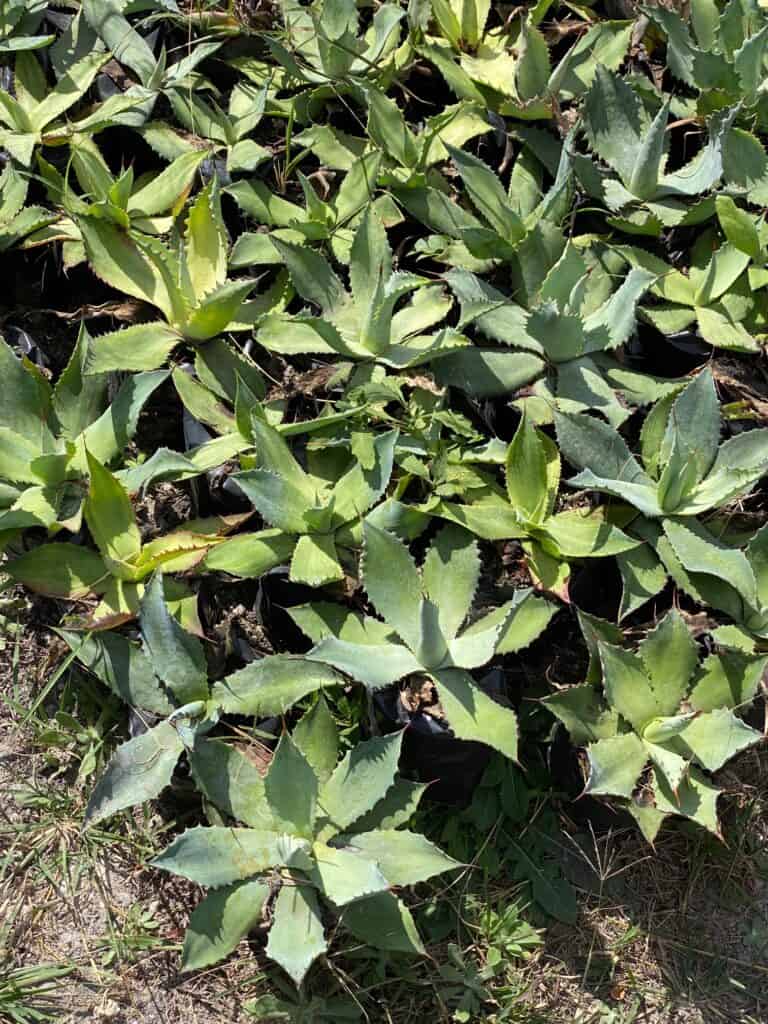
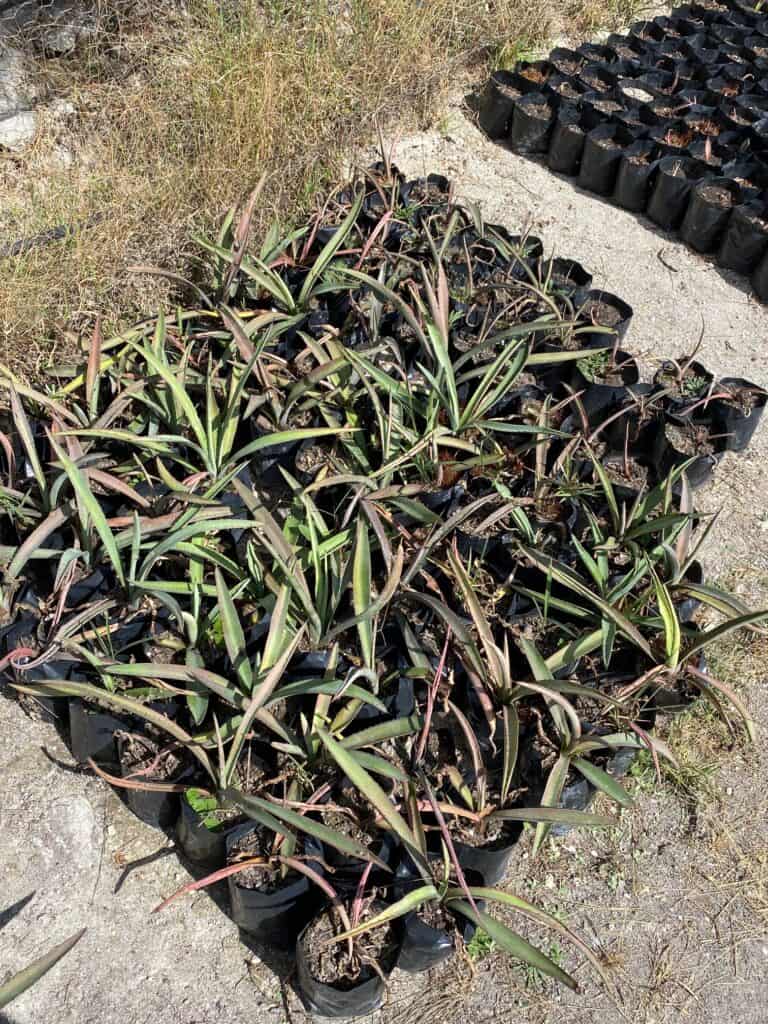
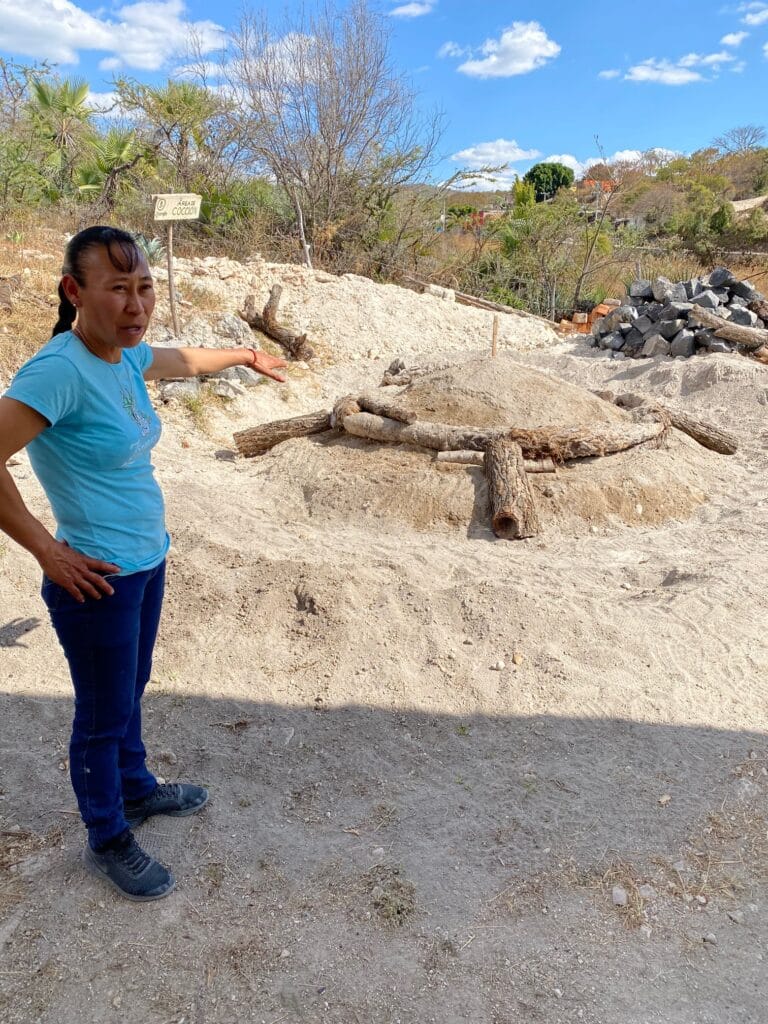
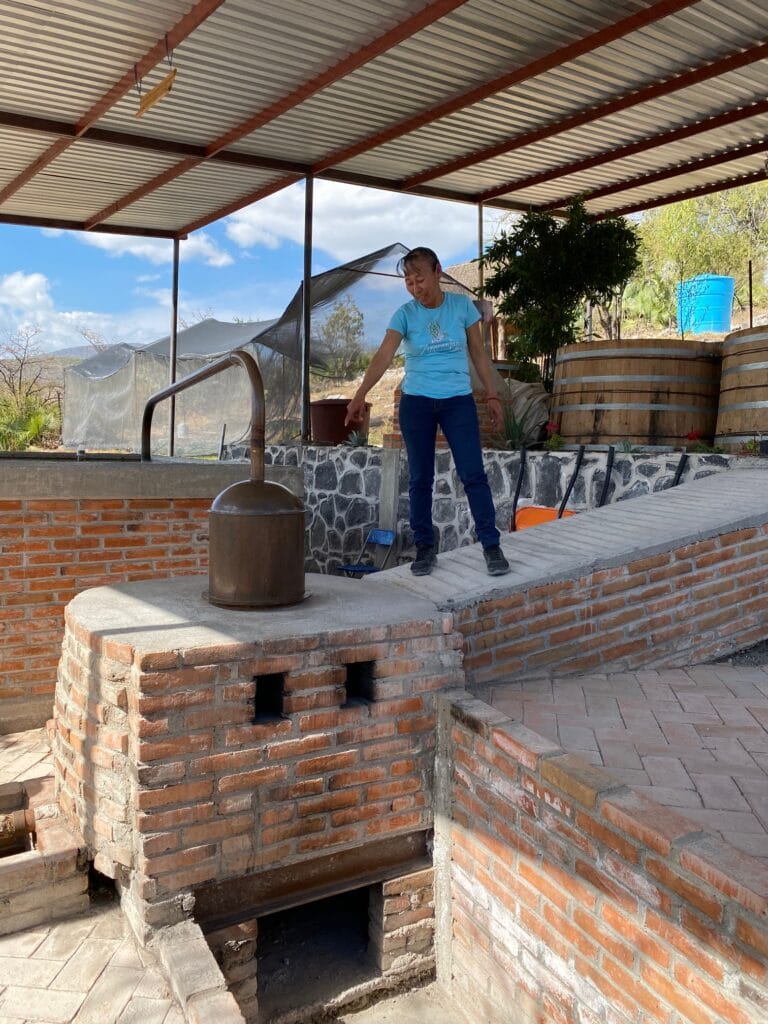
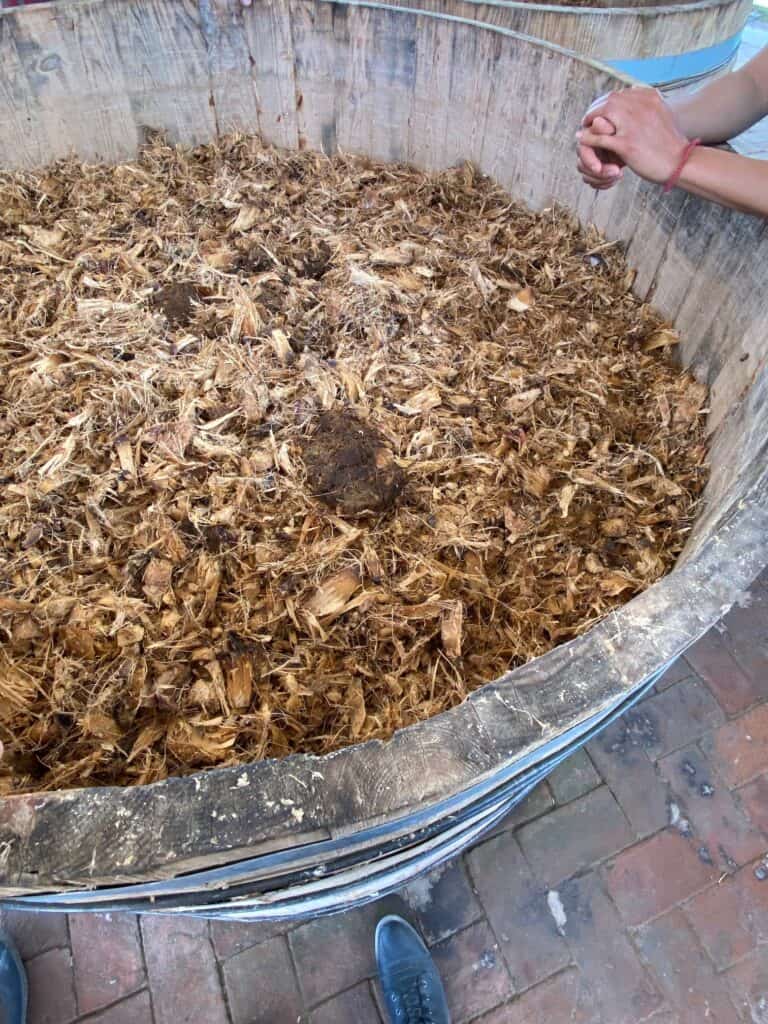
Planning for the future
Sustainability is baked into the ethos of the brand, not to comply with current trends, but rather as a way of honoring the land and heritage the Zinacantan is part of. The cuts of distillate not used in the final mezcal, along with the fibers, are treated in a cistern and repurposed into a natural fertilizer. A rain catch system provides water for the stills, though strictly spring water goes into the mezcal. The name of the brand, Zinacantan, is a Nahuatl word that means “.and of the bats” and they focus on letting agaves flower to attract and feed bat populations.
After touring the fabrica, we walk back up the windy road, full of colorfully painted murals featuring agaves, no doubt alerting tourists as to where they may be able to score bottles. We get comfortable in the small mezcaleria where Faby tends bar, serving samples of different vintages, pechugas, and lightly sweetened fruit infusions, along with big juicy chapulines someone had just gifted her. For anyone wondering how the extended fermentation plays out in the flavors, it’s likely not how you expect: the mezcales are super clean across the board with no overly fermented or funky flavors. Rather each one was rich, concentrated, and focused. Layers of flavors in each spirit ranged from floral to roasted to spicy and more. All of the expressions are around 50% ABV.
With plans in the works to become available in the USA soon, I won’t be surprised to see Zinacantan top the lists of agave geeks and bars before 2022 is over.
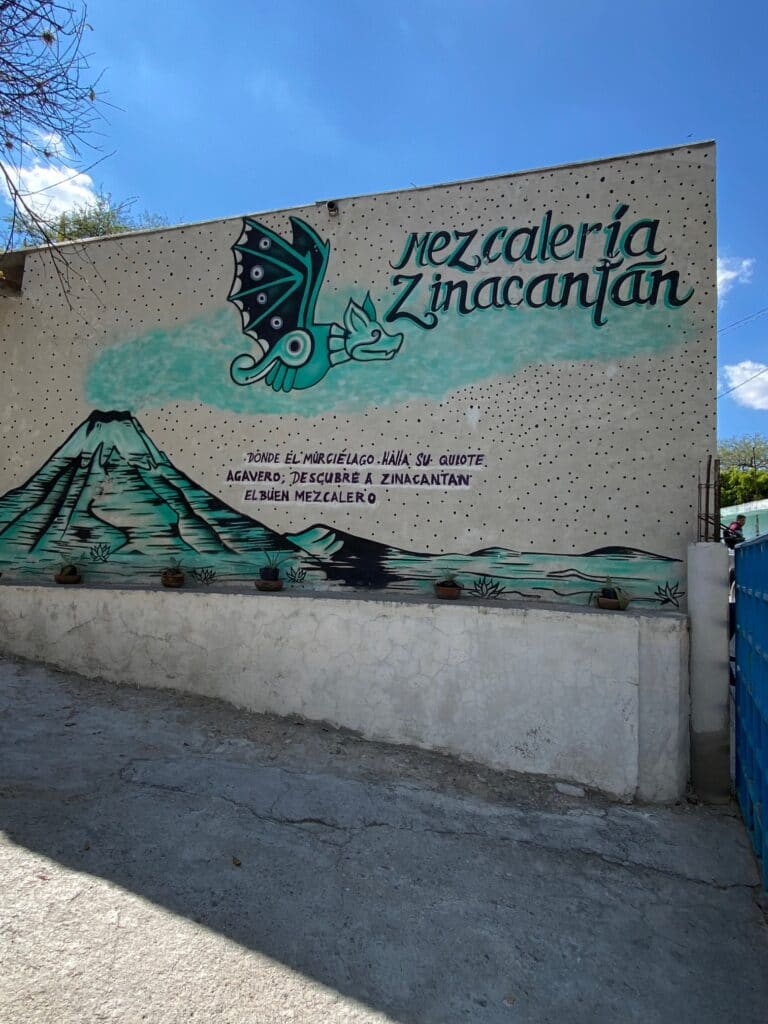
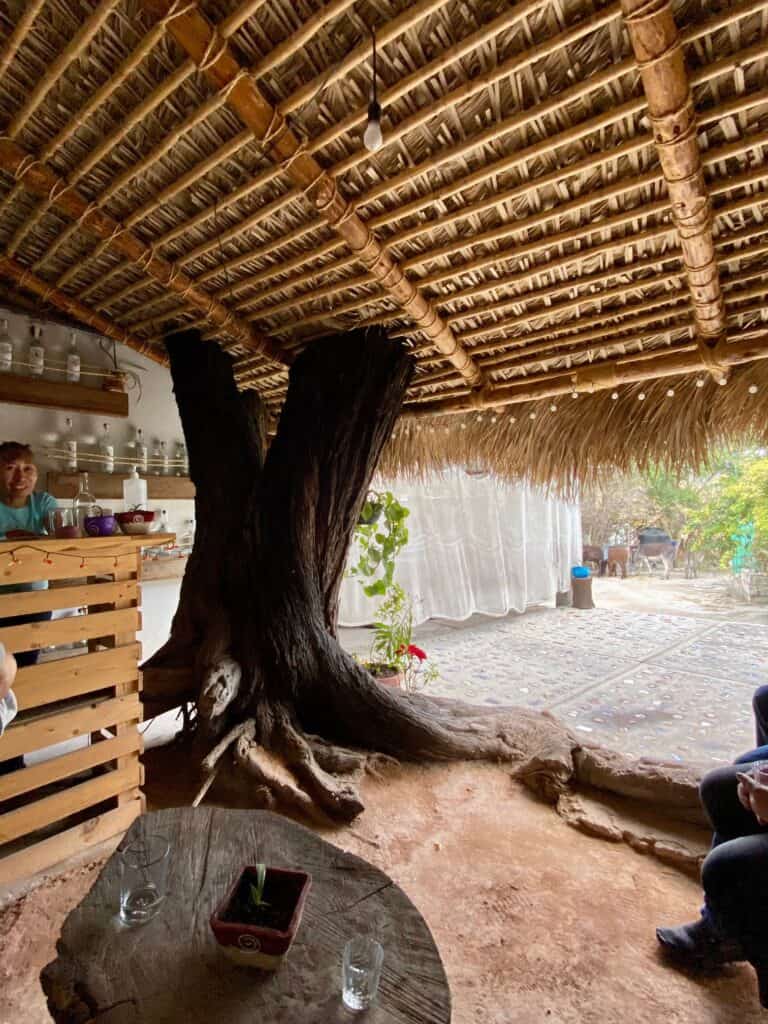
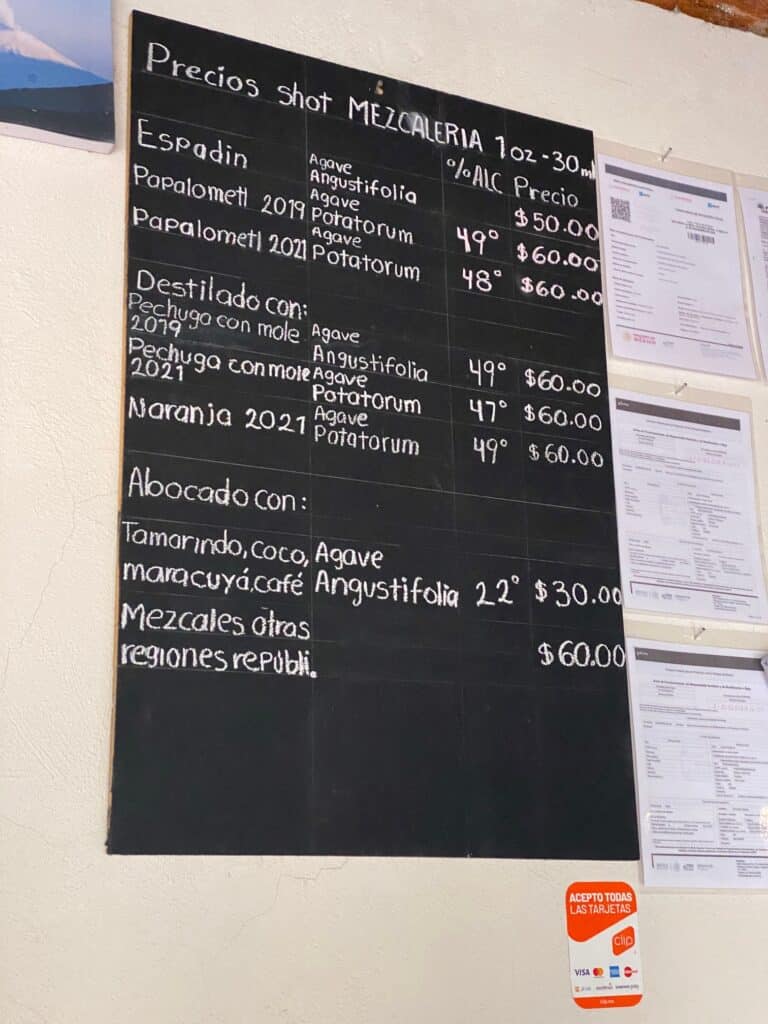

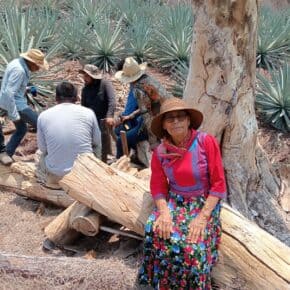
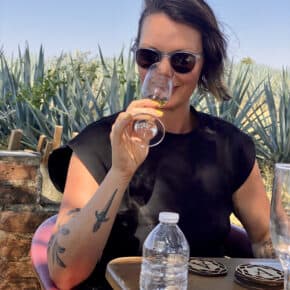
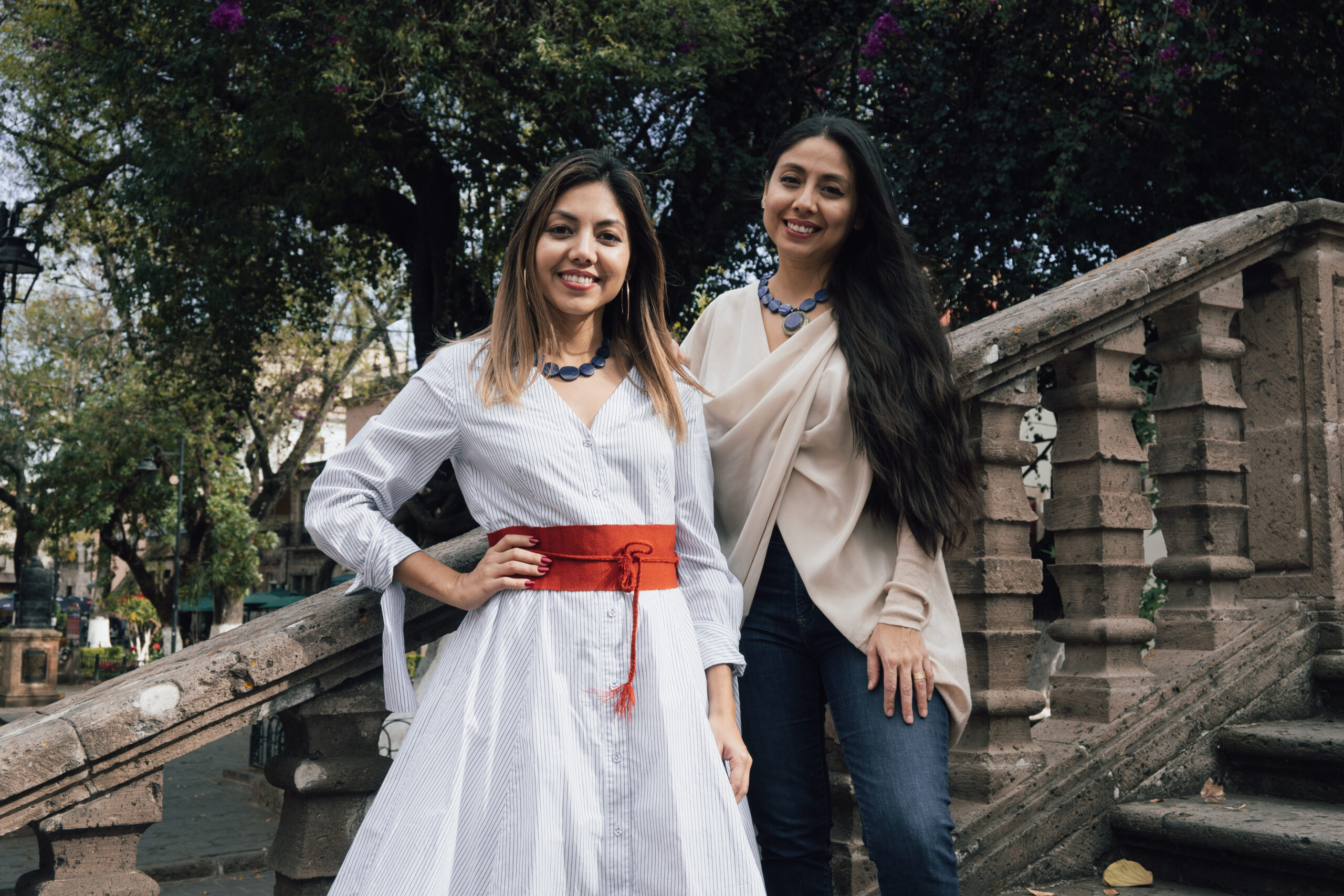









Leave a Comment